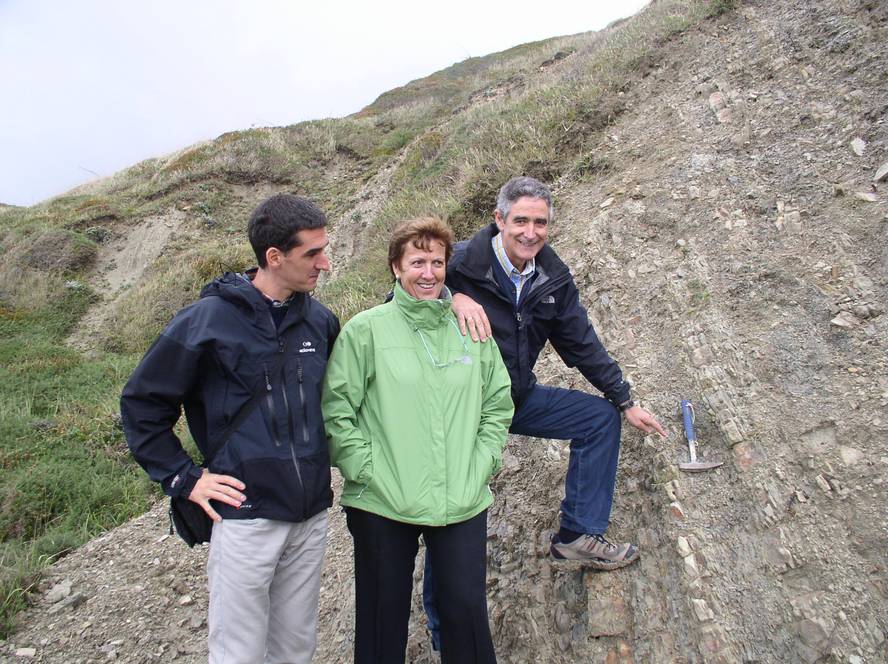Today is placed on the cliffs of Gorrondatxe the gold nail that indicates to be the reference of the lutetian

From today, geologists who want to investigate the history of 47.8 million years ago will have as main reference the cliffs of Gorrondatxe. The International Committee on Stratigraphy (ICS) and the International Union of Geological Sciences (IUGS) have determined that it is the ideal place to investigate the lutetic stadium. This denomination is indicated by a gold nail that today is placed in its corresponding place on the cliffs of Gorrondatxe.
The appointment is especially satisfactory for UPV geologists Xabier Orue-Etxebarria, Estibaliz Apellaniz and Aitor Payros, who have worked for more than ten years to achieve it. They have explained how the process has been: “To obtain the designation of stratotype, the place must meet a series of conditions, among which are the availability, the sequence of complete layers, the absence of tectonic problems (faults, folds, etc.) and the presence of microfossils in good condition. In addition, it is advisable to perform paleomagnetic analysis. We have shown that the cliffs of Gorrondatxe meet all these requirements.”
In addition to demonstrating that it meets all requirements, they have had to prove that it is better than the rest of candidates. Xabier Orue-Etxebarria stressed that “for me the denomination is especially important, since instead of mentioning Paris (where the referent of the Lutetiense was so far), the names of Gorrondatxe and Getxo will appear in the geology books.”
However, the UPV/EHU research team has praised the entire coastline from Muskiz to Baiona: “The entire Basque coast is a geological paradise, an ideal place for the realization of geological research, especially from the time of the lower Cretaceous and Palaeogen (from 40 million years to 125 million years ago).” Proof of this is the presence of two other gold nails on the Basque coast, specifically on the cliffs of Itzurun in Zumaia.





